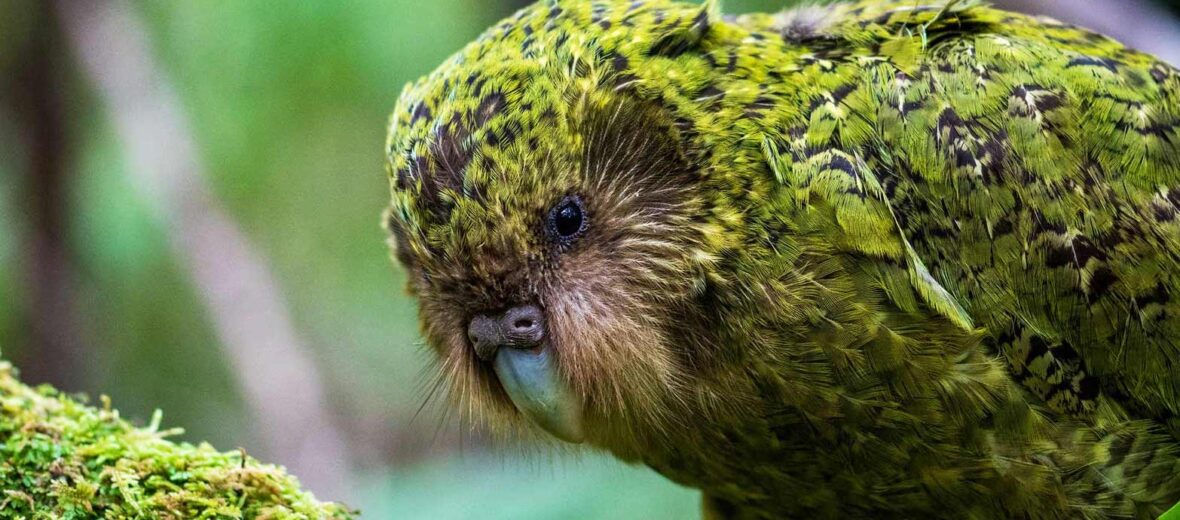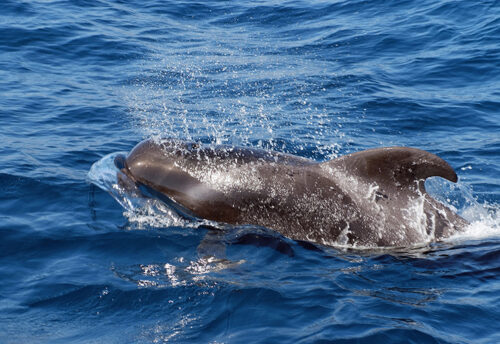
The kakapo, aka the owl parrot or night parrot, is a parrot that can only be found in New Zealand. This bird is Critically Endangered, and is the primary focus of a large conservation effort by the Kakapo Recovery Program of the New Zealand Department of Conservation. This bird is the largest of all the known parrot species.
First the Stats…
Scientific name: Strigops habroptilus
Weight: Up to 9 lbs.
Length: Up to 25 inches
Lifespan: Up to 95 years
Now on to the Facts!
1.) When startled this bird will freeze and rely on camouflage to hide from predators.
2.) Kakapos are the only known flightless parrot. Instead of flying they use their strong legs to sort of jog when they move and they rely on their wings as a sort of parachute when they need to jump from a tree branch.
3.) They are nocturnal (active at night), solitary, herbivores (eat vegetation).
4.) These strange birds also smell really nice. Their smell has been described as a musty violin case. With their strong sense of smell, this odor may help them find each other at night.
5.) The kakapo is also very friendly. They have been known to walk right up to people and sort of cuddle with them; preening them too.
But wait, there’s more on the kakapo!
6.) Sadly, there are only an estimated 154 birds left in the wild, as of 2017.
7.) Male kakapos reach breeding age at around 4 years old and females at around 6.
Did you know…?
Kakapo are vulnerable to predation by cats and stoats, and their eggs and chicks can be killed by rats.
8.) During mating season the males will walk up to 4 miles in order to congregate in large groups where they begin competing for the love of a female.
9.) The male will dig out a bowl crevice in the ground, inflate like a balloon, and begin sounding off, making 20 – 30 ‘booming’ sounds, followed by a high pitched ‘ching’ sound. They do this up to 8 hours a night for 2 – 4 months!
10.) After breeding, the males ditch their partners and let the female raise their chicks alone. The female will lay 1 – 4 eggs.
Now a Short Kakapo Video!
Also, check out the Critter Science YouTube channel. Videos added frequently!
Want to suggest a critter for me to write about? Let me know here.




Leave a Reply